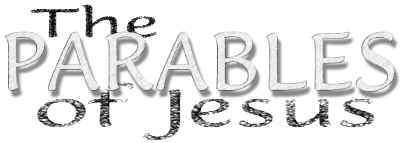|
NOTE: This is a cached page of an original
page that is no longer available.
The Parable
"At its simplest the parable is a metaphor or
simile drawn from nature or common life, arresting the hearer by its
vividness or strangeness, and leaving the mind in sufficient doubt about
its precise application to tease it into active thought." - C.H.
Dodd, The Parables of the Kingdom.
"A parable is a mashal that employs a short
narrative fiction to reference a transcendent symbol." - B. Brandon
Scott, Hear Then the Parable.
"A Parable is a figure of speech in which a
comparison is made between God's kingdom, actions, or
expectations and something in this world, real or imagined."
- Arland J. Hultgren, The Parables of Jesus.

The Distinctive Elements in the Parables of Jesus
 |
One of the most striking things about the parables
of Jesus is their directness of address to the audience--a feature
that is attested in various traditions and thus has the ring of
authenticity.
|
 |
The parables of Jesus are not simply building blocks
within a larger, longer argument that is to be concluded outside of
the parable itself. The parables are themselves front and
center bearers of the message of Jesus.
|
 |
The fact that the parables of Jesus are not used for
argumentation in the sense of the "parables" of ancient
philosophers, popular rhetoricians, or rabbinic masters is
significant for the content of Jesus' parables. There is very
little previous learning that Jesus' hearers need to bring to the
occasion beyond what is gained through life experience.
|
 |
Perhaps most striking about the parables of Jesus is
their ways of portraying God. The parables are thoroughly
theological. But they do not get involved in descriptions of
God's attributes or in theoretical discussions about God. What
is characteristic rather is the sense of God's intimacy and
familiarity through the use of striking but common
metaphors--father, king, a shepherd, the owner of a vineyard, or a
woman who sweeps her house.
|
 |
Characteristic of many of the parables of Jesus, not
all, is the element of surprise in the way they end.
|
 |
Finally, the parables of Jesus capture, combine, and
make use of two major Jewish traditions: wisdom and eschatology.
|
|
|

Created by Eugene Hensell,
OSB
Saint Meinrad School of Theology
Saint Meinrad, IN 47577
Last Updated May 09, 2005
|
Introduction
|
